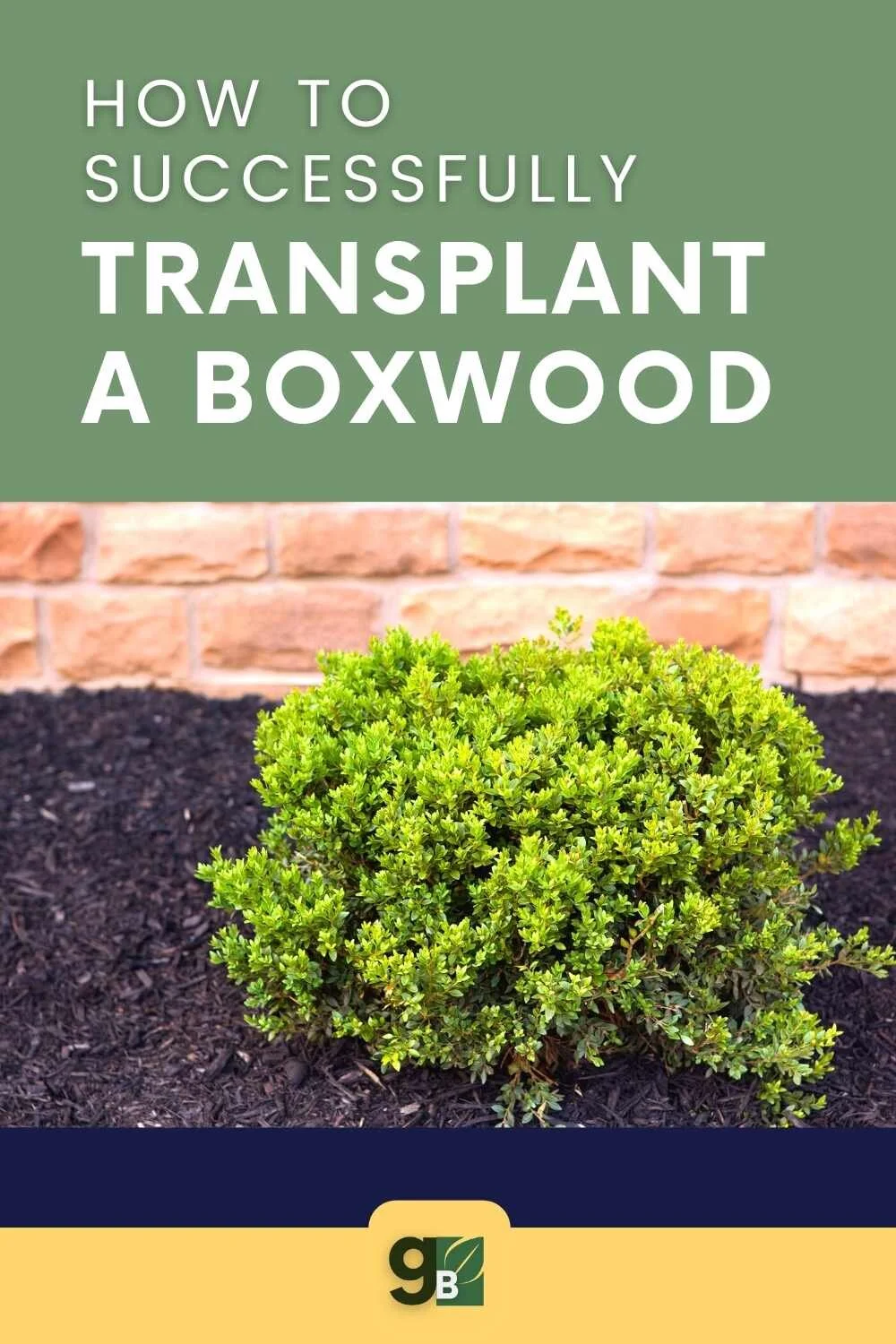Top Tips on Transplanting Boxwoods Successfully
How to transplant a boxwood
If you want to know how to transplant boxwoods, then this is the article for you! Transplanting a boxwood does require some expertise and preparation. There are many reasons why people may want to transplant their boxwoods, including moving them in the landscape, upgrading soil quality and drainage, or planting in a sunnier location. When it comes time for them to be transplanted, there may be some questions you need answers for - like how best to transplant a boxwood? We will go over the best timing for planting, techniques, and tips to make your transplanting successful.
The items listed are accompanied by affiliate links, meaning I earn a small commission if a purchase is made through my links. This has no impact on the cost to the consumer. I link to products this way whenever possible, and it has no bearing on the products I choose to review or recommend.
The Best Time to Transplant Boxwoods
“Transplanting should be completed within 24 hours of digging up the boxwood.”
The best time to transplant boxwoods is in the fall. Although they can also be transplanted in the early spring. Transplanting in the fall is best because the boxwood will have time to establish a deep root system before winter hits. Plan a time when the temperature is cooler and there is more rainfall to help keep the soil moist.
The most important thing when it comes to transplanting boxwood shrubs whether it's in autumn or spring is getting them into their new home as soon as possible after they are dug up from their original location. Transplanting should be completed within 24 hours of digging up the boxwood, or it will start to decline and die.
It is important to note that transplanting isn’t always successful. But if you follow these tips, you have a good chance of it taking successfully.
Transplanting a Boxwood
This boxwood was overcrowded in my front yard so I decided I need it to be moved so it would do better. I am making my trench first so I can easily dig it up and not disturb its roots.
Transplanting Boxwoods in Spring
You can still transplant boxwoods in the spring, it will just take longer for them to establish themselves and become full-grown. Transplanting boxwood shrubs during this time of year is a bit more difficult because they are more likely to experience transplant shock.
Transplants can experience shock when they become stressed due to heat and drought. Boxwood transplant shock can also be caused by the transplanting process itself when new roots are disturbed or the amount of water that a plant receives is reduced.
To avoid these potential problems, make sure the possibility of frost has passed and the soil has warmed up. You also want to transplant your boxwood shrub before new growth develops.
You can see that this boxwood is being crowded out by my azalea bush. The root system is competing and I want to see if I transplant this somewhere else if the boxwood will do better.
You can see the root ball. This boxwood isn’t that big and I planted it a few years ago so the roots aren’t that deep.
Materials Needed to Transplant Boxwoods
Here are the materials that you will need for digging up and moving a boxwood:
Preparation Tips
For the best transplant experience, boxwoods should be root pruned before they are moved. One year ahead of their planned relocation date, make 18 inch deep vertical slits about a foot from the main stem on the bottom of your root ball. Cutting through the roots makes them branch and develop a bigger root system. This will prepare these plants for what lies in store next season.
If you didn't plan ahead and still want to move your boxwoods, have no fear, you can still do it. You’ll just need to prepare the area where you will transplant your boxwoods. When transplanting boxwoods, it is best to water the plants you are moving 24 hours before and saturate them up to 12” deep.
When you water the day before, digging will be easier and the boxwood root ball is more likely to stay moist when it's moved from one place to another. That means that there'll be less chance of transplanting shock or death!
Digging up Boxwoods
You will need to start by digging up the boxwoods you plan to move. To transplant a boxwood start by making a trench around the drip line or outer edge in a spiral pattern; this will allow you to sever lateral roots without harming any of them, which can be damaging for future growth. Boxwood roots aren't that deep, they tend to be more widespread. Boxwood roots are approximately 1/3 of the height of the plant. It is more important to focus on width rather than depth of root ball (even though it's equally important for your transplant to get an intact root ball).
Next, place your spade angled inward at the very edge of your trench so that it is touching the roots and push down to cut them. Dig until the roots are severed completely. You'll want to take some of the soil with you, so as not to injure any of the roots that are left in place. Carefully, lift up the root ball from its trunk and gently tease out the shrub from its original planting spot and place it on a tarp. If it is heavy, ask someone to help you lift it. If your boxwood is on the larger size, I would recommend two people to dig it up and remove it.
Once it is on the tarp you can slide it up to the new hole. Some people wrap burlap around the base of the plant for added protection against soil clinging to roots when they are sitting in their new home. Although this isn't absolutely necessary, it does make the job of cleaning up a little easier.
Remember to fill in the hole where the boxwood originally was.
Now you need to dig the hole where you are planning to transplant your boxwood. It is best to dig the hole twice as wide as the root ball, making sure to keep it wide enough for the roots to spread out. You don't want your hole to be deeper. You don't want the plant to sink.
Once you have a nice, wide trench in which to put your transplanted boxwood it is time for planting!
Planting Boxwood
You can carefully remove your boxwood from the tarp and place it in its new location with a little bit of dirt on top to help stabilize the plant. If needed, fill in around the roots with more soil.
Make sure to use a good quality fertilizer to help aid the transition.
When planting your boxwood, make sure the top of the root ball is about an inch above the soil. This helps with the absorption of water since boxwoods do not like standing water and need well-drained soil.
It is important to fertilize your soil when you transplant your boxwood since the process of digging it up could have removed some nutrients from the soil. If you have poor soil, add compost or other organic material to help improve it. Fertilizer will provide a better foundation for the plant to grow in. Then give the plant watering. Make sure to follow directions on the fertilizer. If you use too much can burn the roots and damage the plant. I personally used this fertilizer which is good for transplanting.
You can now backfill the hole with the existing soil. Being sure to tamp it down nice and tight so that no air pockets are left between the soil and root ball. Continue backfilling until you have reached the desired height.
Now it is time to give the plant watering. Once your boxwood is planted and watered, cover with an inch of mulch to keep moisture from evaporating too quickly.
Water daily to help it take root.
And that's it! Your new boxwood is now transplanted and ready to thrive in its new home.
Just remember to keep a close eye on your boxwoods for at least a few weeks after transplanting them to make sure they are adjusting well to their new environment.
Summing up: Moving Boxwoods
Transplanting boxwoods can be a daunting task if you don't know how to do it. Hopefully, this blog post has given you some tips and tricks that will help make the process less stressful for both you and your beautiful plants! Now go out there and get those new plants into good homes!
Pin for Later>>>


















